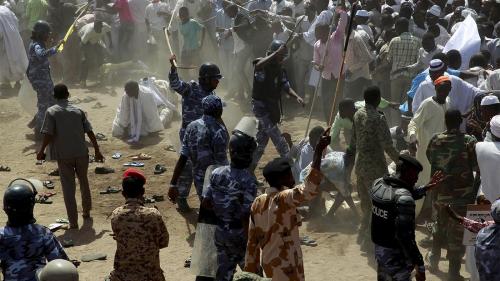Just when the international community thought it had one less conflict to contend with, concerns were reignited earlier this month as news broke of tribal clashes in Sudan’s Darfur region. By the time the dust had settled, at least 250 lives had been lost, hundreds of people had suffered injuries and more than 100,000 Sudanese had been displaced in two different states, Arab News reported.
Perhaps inevitably, fingers are being pointed at Sudan’s joint-military-civilian government, which last month took responsibility for security in Darfur from the UN and the African Union, whose hybrid UNAMID mission peacekeepers had kept violence somewhat under check in the area for the last 13 years.
Experts think the announcement following a UN Security Council resolution on Dec. 22, 2020, that the UNAMID was ending its mission, indirectly contributed to the latest outbreak of violence. On Dec. 31, the force formally ended its operations and announced plans for a phased withdrawal of its approximately 8,000 armed and civilian personnel within six months.
The violence in El-Geneina, the capital of West Darfur, began on Jan. 16 in the form of a fistfight. Members of the powerful Arab Rizeigat tribe and the non-Arab Massalit tribe got embroiled in the clashes, which claimed the lives of scores of people, including children and members of the security forces, according to the Sudanese doctors’ union.
A flare-up two days later in South Darfur between the Rizeigat and the non-Arab Falata tribe over the killing of a shepherd caused dozens more deaths and another wave of displacement. The Falata are a cattle- and camel-herding people who trace their roots to the Fulani of western Africa.
According to the UNHCR, the UN refugee agency, those fleeing the violence into eastern Chad’s Ouaddai province have been forced to seek shelter in remote places that lack basic services or public infrastructure.
In retrospect, warnings by civil society groups, local leaders and experts about the consequences of the UNAMID decision have proved right. Fearing renewed violence, Darfur residents too held protests in late December against the peacekeepers’ departure.
To them, it was not just the lack of experience of the Hamdok government that was a cause for concern. The calm that had prevailed since the arrival of UNAMID was hardly an indicator of the situation on the ground.
While the main conflict has subsided over the years, ethnic and tribal violence still erupts up periodically, mostly involving semi-nomadic Arab pastoralists and settled farmers.
“The fighting wasn’t quiet as sudden as people thought; there had been some clashes in December for example,” Jonas Horner, senior analyst on Sudan at the International Crisis Group, told Arab News.
“Violence has been actually bubbling up in Darfur quiet consistently for some months, and this really undercuts the premise that security has improved (sufficiently) for UNAMID to leave. I think the auspiciousness of the moment for this violence really has much more to do with the end of the (UNAMID) mandate in Darfur. This matters of course because (the violence erupted) just two weeks after the mission wrapped up, taking into account the drawdown period.”
